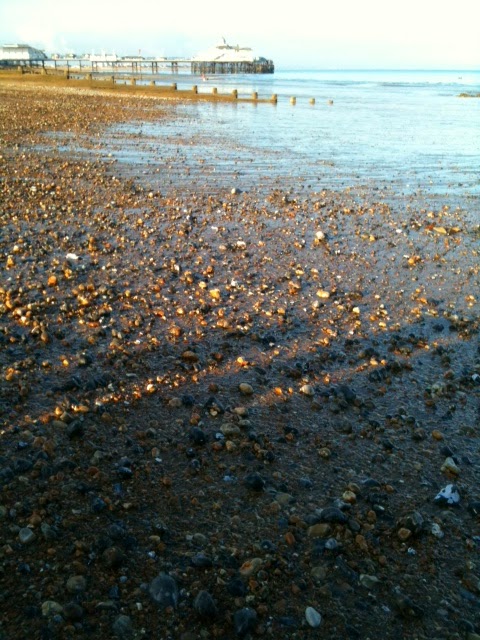Z is
for Zones - Tidal Zones and where we clamber away into May and out of April’s A
– Z ...
 |
| A rock at low tide, exhibiting intertidal zonation - Kalaloch, Washington USA |
Z is
for the foreshore Zones we find at the seaside ... some obvious, some not so
apparent ... they range from ...
 |
| Eastbourne beach zonation clearly shown ... with me standing on a bench! This is taken from Helen's Gardens higher up the cliffs, and west along the Promenade - Beachy Head is, to the west, behind me |
... the
splash or spray zone i.e. just above the high tide mark: land plants and
animals that are adapted to salty conditions live here.
 |
| Eastbourne beach with pier ... the spring water still flows from below the shingle, banked up and kept in place by the groynes |
... lichens,
which are fungi and algae growing in symbiotic partnership, are found here ...
The
strandline (ordinary high water mark), typically composed of debris, is an
important habitat for a variety of animals ...
... sandhoppers and seaweed fly are abundant on rotting seaweed, and these invertebrates provide food for shore birds, such as the rock pipit, turnstone and pied wagtail ... as well as small mammals ...
 |
| The Groynes and its cross strut, kept in situ with large pebbles and stone |
The
lower limit of the splash zone is generally marked by barnacles ... the first
truly marine creatures ...
 |
| The final run of groynes sunk nearly at low water mark |
The
inter-tidal zone (between the tides), which is regularly covered and uncovered
by seawater.
 |
| Barnacles and borers near the low tide mark - they are embedded or have bored into the rocks |
It
extends from the barnacles down through the wrack seaweeds, to the low-tide
area, where large kelp seaweeds begin to take over.
 |
| The rocky foreshore at a lowish tide |
The
third broad band is the sub-tidal (below the tides) zone, stretching from the
kelp fringe into the permanent shallows.
 |
| A Ruddy Turnstone from Wiki |
That is Z for Zones ... from a zoned out A-Zedder, who has a seized Z drive, more commonly known as a C drive, and is ztruggling to zip her way around the blogozphere ... that is Z for the final day of the Aspects of British Coasts in 2014 ...
 |
| Some of the shingle, brought in by man to shore up our beach front, and help keep the town safe from storms; with the pier and hardly visible across Pevensey Bay is Hastings |
By the photos ... you'll see I went to Eastbourne sea front last night ... and what did I see but the intertidal zone!!
Surprised me too ... so hence lots of iphone photos ... to finally see Z out
PS I'm not ignoring you ... just struggling with technology .. but I zill be around and zee you all zoon .....
Hilary Melton-Butcher
Positive Letters Inspirational Stories
























